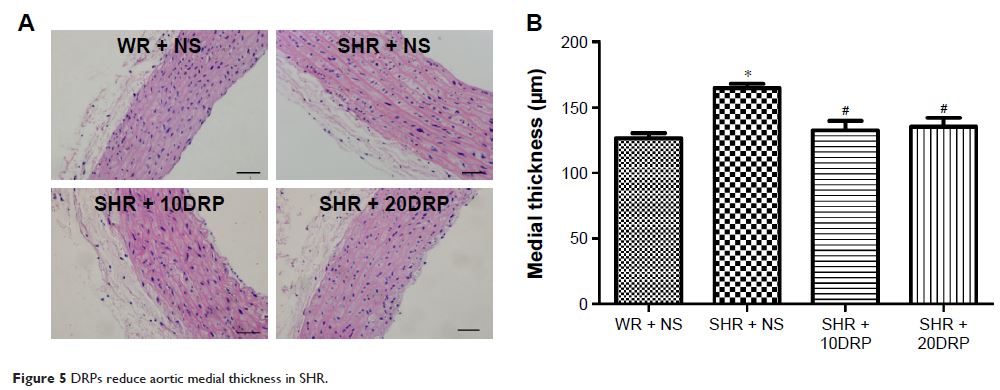108384
论文已发表
注册即可获取德孚的最新动态
IF 收录期刊
- 3.4 Breast Cancer (Dove Med Press)
- 3.2 Clin Epidemiol
- 2.6 Cancer Manag Res
- 2.9 Infect Drug Resist
- 3.7 Clin Interv Aging
- 5.1 Drug Des Dev Ther
- 3.1 Int J Chronic Obstr
- 6.6 Int J Nanomed
- 2.6 Int J Women's Health
- 2.9 Neuropsych Dis Treat
- 2.8 OncoTargets Ther
- 2.0 Patient Prefer Adher
- 2.2 Ther Clin Risk Manag
- 2.5 J Pain Res
- 3.0 Diabet Metab Synd Ob
- 3.2 Psychol Res Behav Ma
- 3.4 Nat Sci Sleep
- 1.8 Pharmgenomics Pers Med
- 2.0 Risk Manag Healthc Policy
- 4.1 J Inflamm Res
- 2.0 Int J Gen Med
- 3.4 J Hepatocell Carcinoma
- 3.0 J Asthma Allergy
- 2.2 Clin Cosmet Investig Dermatol
- 2.4 J Multidiscip Healthc

使用减阻聚合物的新型流体动力学方法来改善自发性高血压大鼠左心室肥大和主动脉重塑
Authors Zhang X, Wang X, Hu F, Zhou B, Chen H, Zha D, Liu Y, Guo Y, Zheng L, Xiu J
Received 12 August 2016
Accepted for publication 13 October 2016
Published 13 December 2016 Volume 2016:11 Pages 6743—6751
DOI https://doi.org/10.2147/IJN.S119607
Checked for plagiarism Yes
Review by Single-blind
Peer reviewers approved by Professor Farooq Shiekh
Peer reviewer comments 2
Editor who approved publication: Dr Linlin Sun
Abstract: Drag-reducing polymers (DRPs), when added in minute concentrations, have
been shown to decrease peripheral vascular resistance. In this study, the
effect of DRPs on the hypertension-induced left ventricular hypertrophy and
aortic remodeling was evaluated in spontaneously hypertensive rats (SHR). Male
SHR and age-matched Wistar rats were divided into four groups and received
intravenous injection of normal saline (NS) or DRPs. Body weight (BW), heart
rate (HR) and systolic blood pressure (SBP) were measured. Echocardiography was
used to evaluate the changes in left ventricle (LV) function and global wall
motion. The LV and aorta were stained by hematoxylin and eosin. Cell size of
cardiomyocytes and aortic medial thickness were evaluated for each section. The
expression of endothelin-1 (ET-1) of LV and aorta was examined by quantitative
reverse transcription polymerase chain reaction (qRT-PCR) and
immunohistochemistry. There was no significant difference in the increase of
SBP among SHR + NS, SHR + 10DRP and SHR + 20DRP
groups. SHR + NS group had markedly smaller left ventricular
end-systolic diameter and left ventricular end-diastolic diameter but bigger
anterior and posterior systolic wall thicknesses, while there was no
significant difference in fractional shortening and ejection fraction. The
cross-sectional areas (CSAs) of cardiomyocytes and the medial thickness of the
aorta in SHR + 10 (ppm) DRP and SHR + 20 (ppm) DRP groups
were significantly reduced compared with SHR + NS group. The
expression of ET-1 in SHR + 10DRP and SHR + 20DRP groups
was significantly attenuated. These results suggest that chronic treatment with
DRPs can protect against left ventricular hypertrophy and aortic remodeling.
DRPs may offer a new approach to the treatment of left ventricular hypertrophy
and aortic remodeling caused by hypertension.
Keywords: aortic remodeling, drag-reducing
polymers, ET-1, hypertension, left ventricular hypertrophy
